Choosing between metal, plastic, and ceramic random packing depends on various factors such as temperature, corrosion resistance, mechanical strength, and the specific application in your chemical or industrial process. Below is an overview of these random packing types, including their properties, typical applications, and factors to consider when making a selection.
Metal Random Packing
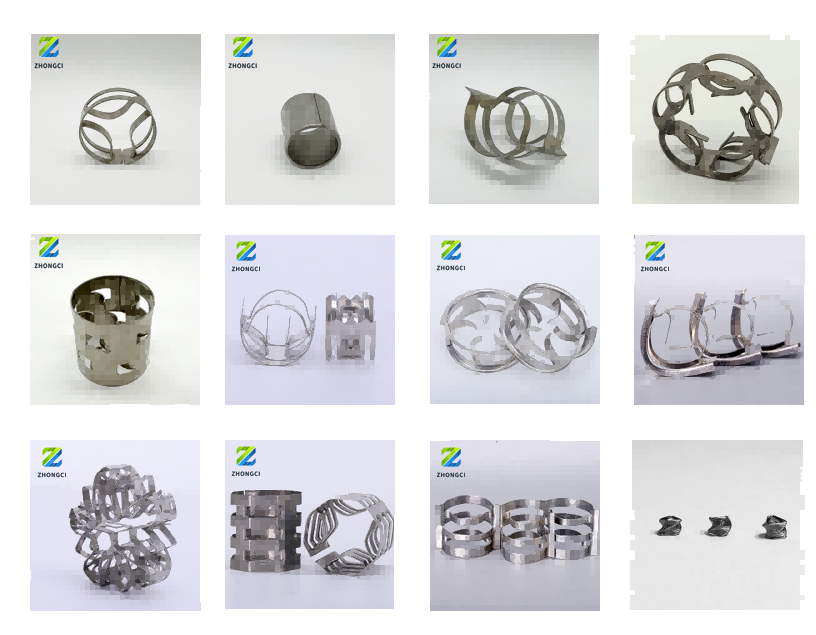
Properties:
High Thermal Stability: Metal random packing materials can handle higher temperatures than plastic random packing, making them suitable for high-temperature processes.
Good Thermal Conductivity: Metal has excellent thermal conductivity, which is beneficial for heat transfer applications.
Corrosion Resistance: Depending on the type of metal, corrosion resistance can vary. Stainless steel and alloy metals (e.g., Hastelloy, Monel) are often used for their resistance to various chemicals.
Heavy Weight: Metal random packing is typically heavier than plastic and ceramic, which may impact handling and transportation.
Applications:
High-Temperature Processes: Used in reactors, distillation columns, and absorption towers in high-temperature applications like gas separation, refining, and catalytic cracking.
Hydrocarbon Processing: Ideal for applications in petrochemical plants, particularly in areas such as cracking, distillation, and gas scrubbing.
Gas Scrubbing: Metal random packing can be used in processes that involve high pressure and high temperature where gas-liquid contact is needed.
When to Choose Metal random Packing:
When the process involves high temperatures (above 200°C) or when thermal conductivity is crucial.
If mechanical strength and structural integrity are essential under high pressure.
If corrosion resistance is adequate or the chemical environment is not highly aggressive.
2. Plastic Random Packing
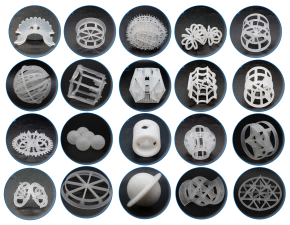
Properties:
Excellent Corrosion Resistance: Plastic random packing has outstanding resistance to a wide range of chemicals, making it ideal for corrosive environments (e.g., acid/base reactions).
Lightweight: Plastic materials are lighter than metal and ceramic, making them easier to handle and install.
Lower Thermal Stability: Plastics generally have lower thermal stability, with most types tolerating temperatures up to around 100–150°C (depending on the material).
Flexible: Plastic random packing is often used in applications where ease of installation and reduced weight are important considerations.
Applications:
Chemical Reactors: Plastic random packing is commonly used in reactors dealing with aggressive chemicals such as acids, alkalis, and solvents.
Wastewater Treatment: Used in biological treatment systems, scrubbers, and other environments requiring corrosion resistance.
Low-Temperature Applications: Suitable for processes that do not exceed moderate temperatures, such as in environmental or water treatment applications.
When to Choose Plastic random Packing:
For processes with highly corrosive chemicals (e.g., sulfuric acid, hydrochloric acid) where corrosion resistance is a priority.
If the temperature of the process is relatively low or moderate, typically below 150°C.
When weight and ease of handling are important factors.
3. Ceramic Random Packing
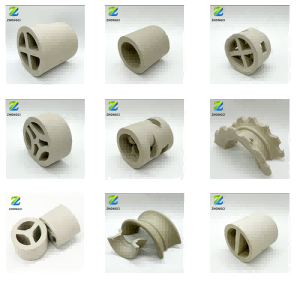
Properties:
High Thermal and Chemical Resistance: Ceramic random packing offers excellent resistance to both high temperatures (typically up to 1200°C or higher) and aggressive chemicals, making it suitable for harsh environments.
Brittle: Ceramic materials are more brittle compared to metal and plastic random packing. This requires careful handling to avoid damage during installation.
Good Surface Area: Ceramic random packing often provides a large surface area for gas-liquid contact, enhancing mass transfer efficiency.
Good Insulation: Due to their low thermal conductivity, ceramic materials are often used in processes where insulation is beneficial.
Applications:
High-Temperature and High-Corrosion Environments: Used in applications like coal gasification, hydrogenation, and other high-temperature or corrosive processes.
Catalytic Reactors: Commonly used in reactors that require catalytic support for reactions like catalytic cracking, hydrogenation, and other petrochemical processes.
Flue Gas Desulfurization (FGD): In industries like power plants, where sulfur dioxide needs to be removed from flue gases.
When to Choose Ceramic Packing:
For high-temperature processes (above 200°C) where both chemical resistance and high surface area are important.
When thermal insulation is necessary.
In applications that require high corrosion resistance and where the material won't be exposed to mechanical stress that could cause it to break.
How to Choose the Right Random Packing:
Temperature Requirements:
Metal random packing is best for high-temperature applications (above 200°C).
Plastic random packing is suitable for low to medium-temperature processes (up to around 150°C).
Ceramic random packing is ideal for extremely high temperatures (up to 1200°C or more).
Corrosion Resistance:
Plastic random packing provides superior resistance to corrosive chemicals (acids, alkalis, solvents).
Ceramic random packing is resistant to both high temperatures and aggressive chemicals.
Metal random packing offers decent corrosion resistance, but its performance depends on the material (e.g., stainless steel, alloys).
Mechanical Strength:
Metal random packing offers high mechanical strength, making it suitable for high-pressure and high-vibration environments.
Plastic random packing is lighter and can be used where mechanical strength is not as critical.
Ceramic random packing is brittle and should be avoided in applications with vibration or mechanical impact.
Application Type:
Metal random packing: Ideal for high-pressure and high-temperature environments like petroleum refining and chemical processing.
Plastic random packing: Best for applications involving corrosive chemicals and low to medium temperatures, such as acid-base reactions or wastewater treatment.
Ceramic random packing: Suited for high-temperature, high-corrosion environments like flue gas desulfurization or catalytic reactions in the petrochemical industry.
Summary:
Choose Metal random Packing for high temperatures, good mechanical strength, and when thermal conductivity is important.
Choose Plastic random Packing for corrosive environments with moderate temperatures, especially when weight and cost are critical factors.
Choose Ceramic random Packing for extreme temperatures and high chemical resistance but when brittleness is manageable, such as in catalytic processes or flue gas treatment.
Selecting the right random packing ultimately depends on your specific process conditions, including temperature, chemical environment, mechanical stresses, and efficiency requirements.

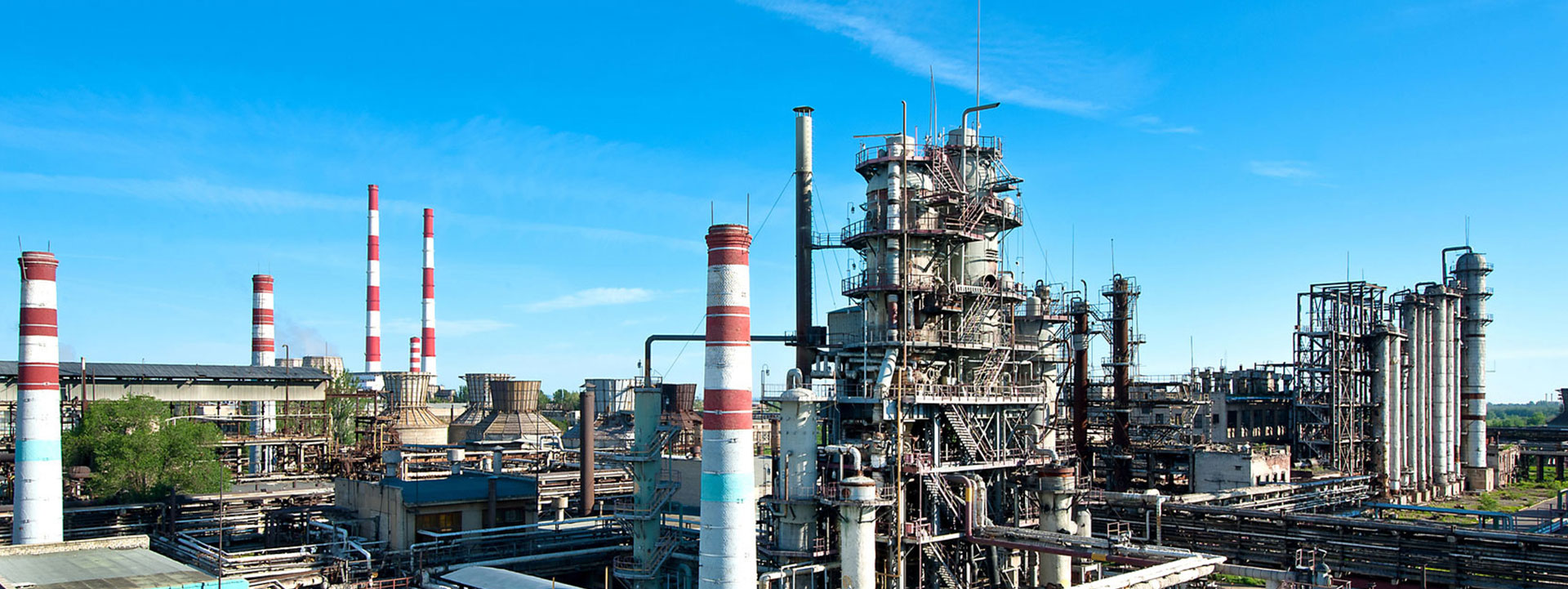
 2025-03-25
2025-03-25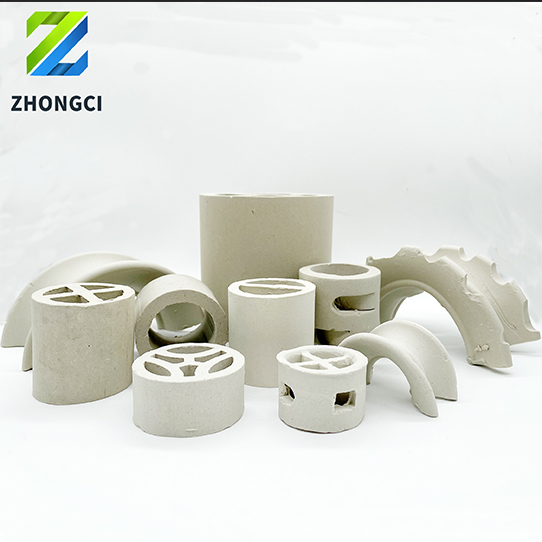
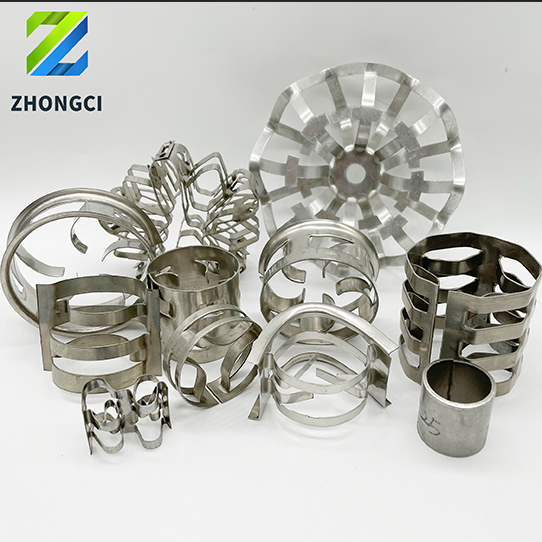
 0799-6335986
0799-6335986
 +86-18107991684
+86-18107991684
 yuna@chempacking.cn
yuna@chempacking.cn

 Hmoe
Hmoe